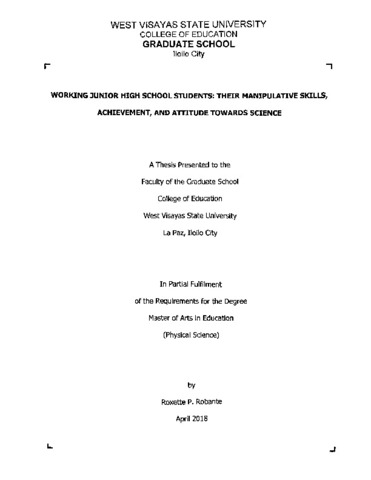Child protection in schools: Preventive practices in an inclusive classroom for learners with special education needs
Share
Zusammenfassung
The purpose of this survey design research was to investigate the child protection preventive practices in an inclusive classroom for learners with special educational needs (LSENs). The quantitative phase of this study aimed to determine the component of child protection prevention in place and specific child protection prevention strategies practiced in schools. The qualitative phase sought to understand the insights on the implementation of preventive practices from the experiences of the participants. Bronfenbrenner's Socio-ecological Theory provided the framework for this study. Using purposive sampling, the researcher conducted the quantitative phase to 42 respondents The researcher-made instrument for this research was duly validated, pilot-tested, and administered to the participants of the quantitative phase. For the qualitative phase, four participants were chosen to participate in the follow-up interview. The results of the survey were analyzed through SPSS, specifically the mean and the standard deviation. The responses of the participants in the qualitative phase were processed using NVivo. The result showed that the three predetermined components of child protection prevention were highly in place, namely (a) student involvement; (b) school management and initiatives; and (c) policy implementation, monitoring and sustainability. The top five preventive practices for student involvement were also identified. In terms of school management and initiatives, the top five practices were determined the same with practices in policy monitoring, implementation, and sustainability. In the qualitative phase, there were six themes generated form the interview responses of the participants which divulged insights from their experiences on implementing child protection preventive practices. It is concluded that schools in the Division of Passi City fully implement child protection practices yet do not specifically include provisions for LSENs in their child protection policies. Nevertheless, the commitment of school personnel on the implementation of child protection which is significant in the prevention of victimization of LSENs was shown in this study.
Recommended Citation
Golez, R. C. (2021). Child protection in schools: preventive practices in an inclusive classroom for learners with special education needs. [Masters' thesis, West Visayas State University]. WVSU Institutional Repository and Electronic Dissertations and Theses PLUS.
Type
ThesisKeywords
Inclusive classroom Special educational needs Learners with disabilities Child protection in schools Child-friendly school system Victimization Children with learning disabilities Inclusion of disability Child protection policy Child protection preventive practices Child protection preventive practices in schools
Schlagwort
Degree Discipline
Special EducationDegree Name
Master of EducationDegree Level
MastersPhysical Description
xii, 177 p. .ill (col.).
Collections
- 2. Master's Theses [156]
Verwandte Dokumente
Anzeige der Dokumente mit ähnlichem Titel, Autor, Urheber und Thema.
-
Working junior high school students: Their manipulative skills, achievement, and attitude towards Science
Robante, Roxette P. (West Visayas State University, 2018-04)This mixed method quantitative-qualitative research study aimed to find out the manipulative skills, achievement, and attitude towards science of junior high school students in academic year 2017-2018. The quantitative ... -
Towards full acceptance: The school bullying experiences of children with disabilities as a basis for an intervention program
Gaitan, Dior Gee T. (West Visayas State University, 2017-03)This qualitative study was conducted to document the school bullying experiences of children with disability in public school through the use of multiple case study. The documented school bullying stories from children ...




